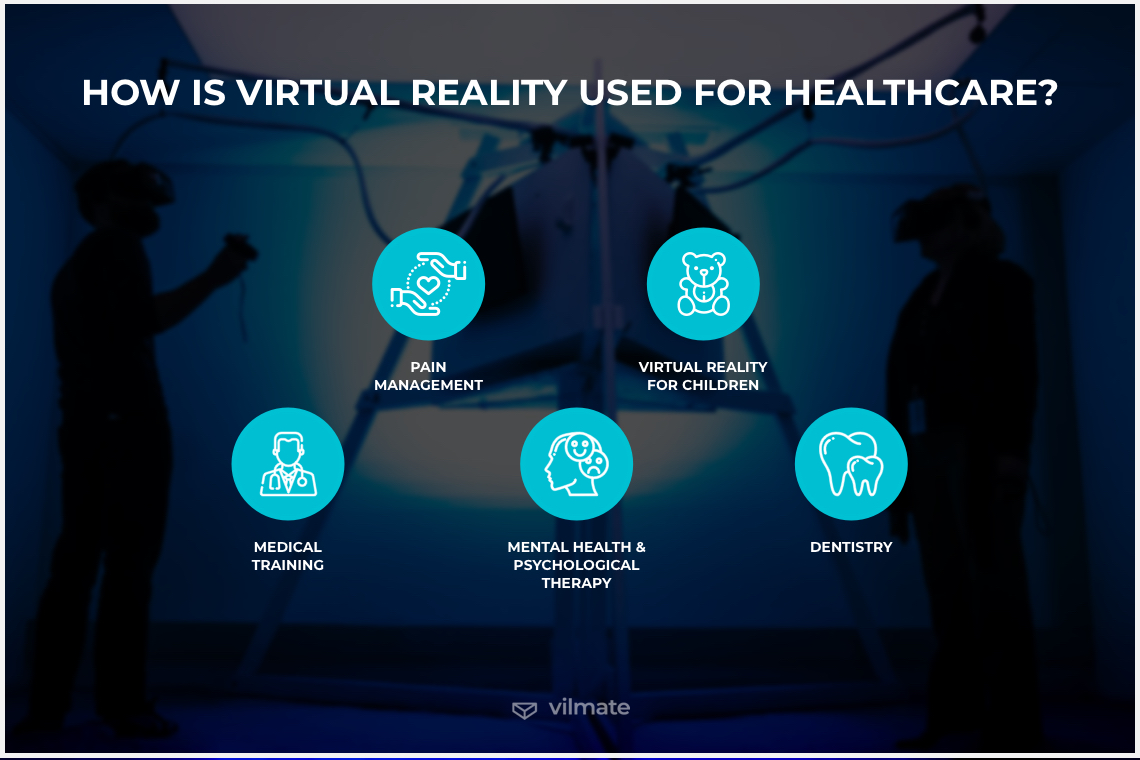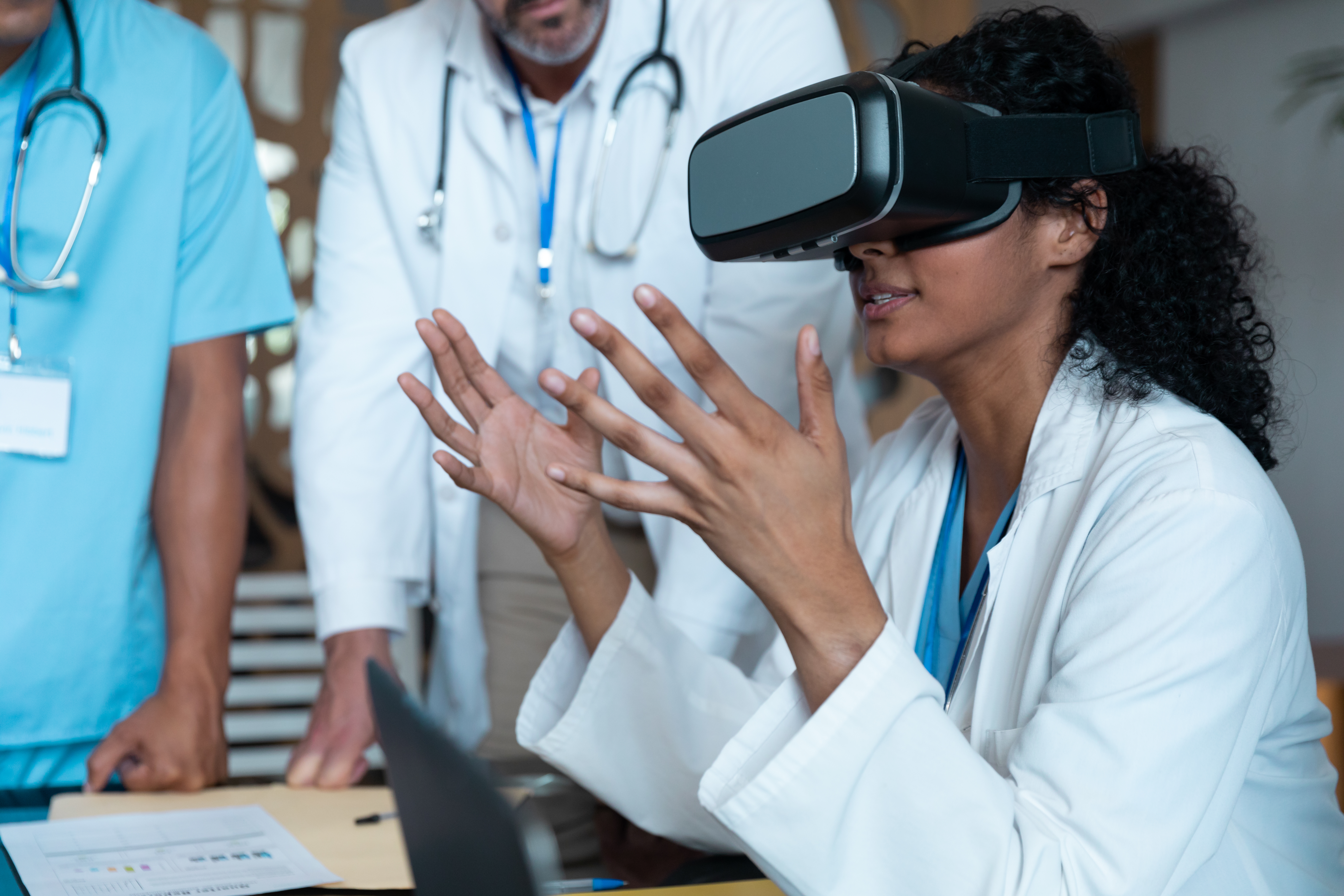The use of virtual reality (VR) in healthcare has revolutionized patient care, offering an immersive and interactive approach to treatment. Imagine a world where doctors can simulate medical procedures, allowing them to practice and perfect their skills before performing them on actual patients. This technology has the potential to enhance patient care in ways that were previously unimaginable.

Revolutionizing Patient Care with Virtual Reality in Healthcare
Virtual reality (VR) technology has made significant advancements in recent years and has found numerous applications in various industries. One area where VR is having a profound impact is healthcare, particularly in enhancing patient care. With its ability to create immersive and interactive virtual environments, VR has opened up new possibilities for training healthcare professionals, assisting in surgical procedures, managing pain and anxiety, and improving rehabilitation outcomes.
Virtual reality creates a simulated environment that can be similar to the real world or completely fantastical. It involves wearing a VR headset that tracks head movements and presents visual and auditory stimuli, giving users the perception of being present in a virtual environment. This technology is being harnessed in healthcare to improve patient experiences and outcomes by addressing various challenges and limitations in the traditional healthcare system.
Virtual reality applications in healthcare provide an innovative approach to medical education and training. Medical professionals can now benefit from realistic and interactive simulations that allow them to practice procedures and gain practical experience in a controlled environment. These simulations can be used for training in surgical techniques, emergency response, and complex medical scenarios that may be challenging to replicate in traditional teaching settings. Additionally, VR training can help healthcare professionals refine their skills and improve their decision-making abilities, ultimately leading to safer and more efficient patient care.
Moreover, virtual reality is proving to be a valuable tool in assisting with surgical procedures. Surgeons can use VR technology to visualize patient anatomy in a three-dimensional virtual space, enhancing their understanding of complex structures and improving surgical planning. This virtual visualization can help surgeons identify potential challenges and develop strategies to overcome them before entering the operating room. Additionally, VR can be used during actual surgeries to guide surgeons, providing real-time feedback and reducing the risk of errors or complications.
Enhancing Patient Engagement and Rehabilitation through Virtual Reality
Patient engagement is a crucial aspect of healthcare, as it promotes better adherence to treatment plans and improves overall health outcomes. Virtual reality offers unique opportunities to engage patients and make their healthcare experiences more interactive and enjoyable. By creating virtual environments and experiences, VR can help alleviate anxiety and fear in healthcare settings, making patients feel more comfortable during procedures or treatments.
VR is also being utilized to manage pain in patients who undergo medical procedures or suffer from chronic conditions. Virtual reality distraction techniques, such as immersive games or environments, can help redirect a patient’s attention and provide a distraction from pain stimuli. Studies have shown that VR distraction can significantly reduce pain perception and discomfort, making it a valuable non-pharmacological tool in pain management.
Furthermore, virtual reality has demonstrated its effectiveness in enhancing rehabilitation outcomes. Traditional rehabilitation exercises can sometimes be monotonous, leading to a lack of motivation and adherence. By incorporating VR, rehabilitation can become more engaging and enjoyable. Patients can participate in virtual scenarios that simulate real-life activities, making therapy sessions more interactive and exciting. This approach not only improves patient compliance but also enhances motor skills, balance, and cognitive abilities.
Virtual reality-based rehabilitation has shown promising results in various conditions, including stroke rehabilitation, physical therapy, and neurorehabilitation. The immersive nature of VR can help patients relearn movements, regain function, and increase their overall quality of life. Additionally, VR can provide real-time feedback to both the patient and therapist, allowing for more personalized and effective rehabilitation programs.
Exploring the Benefits and Challenges of VR in Healthcare
While virtual reality offers numerous advantages in healthcare, it also brings forth certain challenges that need to be addressed for its widespread adoption and integration into patient care. One of the key benefits of VR is its ability to create immersive experiences that can elicit emotional responses. However, this can also lead to potential side effects such as cybersickness or discomfort. The technology needs to be refined to minimize these adverse effects and ensure a seamless and comfortable experience for patients.
Another challenge is the cost of implementing VR solutions in healthcare settings. VR equipment and software can be expensive, making it inaccessible to many healthcare facilities, especially smaller ones with limited budgets. Additionally, training healthcare professionals to effectively use VR technology and interpret the data it provides requires time and resources. Despite these challenges, as VR technology continues to evolve, costs are likely to decrease, making it more accessible to healthcare providers.
There are also ethical considerations surrounding the use of VR in healthcare. For example, the use of VR for pain management may raise concerns about potential addiction or dependency on virtual experiences. Additionally, privacy and data security are crucial when using VR technology, as it involves collecting and processing personal health information. Striking a balance between the benefits and ethical implications of VR is essential for responsible and effective use in patient care.
The integration of virtual reality into healthcare is an ongoing process that requires collaboration between healthcare professionals, technologists, researchers, and policymakers. It is crucial to conduct further research and gather evidence to validate the effectiveness of VR in different healthcare contexts and patient populations. This will help build a solid foundation for the integration of VR into standard clinical practice and ensure its maximum potential is realized in enhancing patient care.
The Future of Virtual Reality in Healthcare
The future of virtual reality in healthcare looks promising, with the potential to revolutionize patient care and transform the healthcare landscape. As technology continues to advance, VR applications will become more sophisticated, realistic, and tailored to individual patient needs. This will allow for personalized treatment plans, enhanced patient engagement, and improved health outcomes.
Virtual reality has the potential to bridge gaps in access to healthcare by providing remote and telemedicine solutions. Patients in rural or underserved areas can benefit from VR-based consultations and treatments without the need for physical travel. This not only improves access to care but also reduces the burden on healthcare systems and resources.
Moreover, VR can be combined with other emerging technologies such as artificial intelligence (AI) and augmented reality (AR) to create even more comprehensive and powerful healthcare solutions. AI algorithms can analyze data collected from VR experiences and provide personalized insights and recommendations for healthcare providers. AR overlays can augment the real-world view with virtual information, assisting surgeons during procedures or helping patients understand complex medical concepts.
The integration of virtual reality into healthcare is an exciting and dynamic journey that holds immense potential for transforming patient care. As technology evolves and becomes more accessible, it is crucial for healthcare professionals to embrace and explore the possibilities that VR offers. By leveraging the power of virtual reality, healthcare can become more patient-centered, efficient, and effective, ultimately leading to better health outcomes for individuals and communities.
Conclusion
In conclusion, virtual reality is revolutionizing patient care in healthcare. The immersive and interactive nature of VR technology allows for innovative applications in medical education and training, surgical procedures, pain management, and rehabilitation. By enhancing patient engagement, improving treatment outcomes, and bridging gaps in access to care, VR has the potential to transform the healthcare landscape. However, challenges such as cost, ethical considerations, and refining the technology remain to be addressed.
As the future of virtual reality in healthcare unfolds, continuous research, collaboration, and technological advancements will play a crucial role in maximizing its potential. By harnessing the power of VR and combining it with other emerging technologies, healthcare professionals can provide personalized, efficient, and patient-centered care. With ongoing advancements and adoption, virtual reality has the potential to shape the future of healthcare and improve the lives of patients worldwide.
Key Takeaways: Enhancing Patient Care: The Impact of Virtual Reality in Healthcare
- Virtual reality (VR) technology is making a significant impact in healthcare.
- VR can be used to reduce pain and anxiety in patients during medical procedures.
- It has the potential to enhance medical training and education for healthcare professionals.
- VR can help in the treatment of mental health conditions such as phobias and PTSD.
- Using VR, healthcare providers can remotely monitor and assist patients in real-time.

Virtual reality has revolutionized patient care in healthcare by offering immersive experiences that can enhance treatment outcomes. By creating virtual environments, healthcare providers can simulate real-life situations, allowing patients to practice skills, manage pain, and overcome fears. This technology has proven effective in a wide range of medical fields, from mental health therapy to physical rehabilitation.
Moreover, virtual reality has the potential to reduce stress and anxiety in patients, making medical procedures less intimidating. It also allows healthcare professionals to visualize data in a more interactive and intuitive way, leading to better diagnoses and treatment plans. With ongoing advancements in virtual reality technology, the future of patient care holds even greater promise for improved outcomes and experiences.


